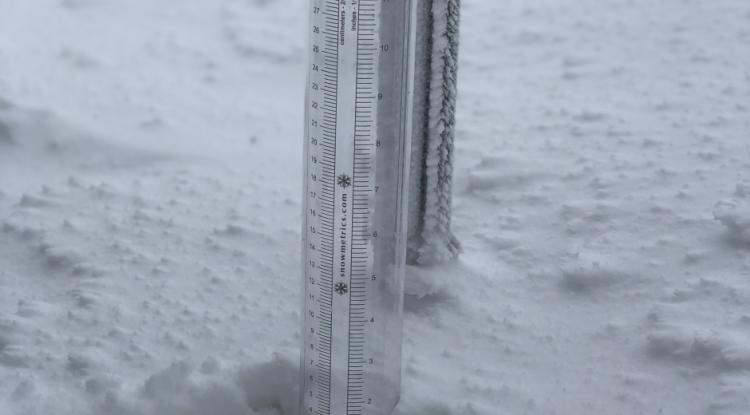
Snow measurements taken in Steamboat Springs by INSTAAR's Mountain Hydrology Group in March 2019. Credit: Melissa Estep.
On April 1 each year, water managers across the West use the amount of snowpack present as a part of a simple equation to calculate the available water supply for a given region that year. Experts from the University of Colorado Boulder are available this week to discuss the relationship between snowpack and drought in the western U.S. and what a changing climate could mean for Colorado and beyond.
Climate change and snowpack
Keith Musselman, research associate at the Institute of Arctic and Alpine Research (INSTAAR), evaluates the availability of freshwater in seasonally snow-covered mountains and forests. His upcoming research examines widespread declines in snow water resources from the Mexican border to the Alaskan Arctic. He can speak to what a warming world due to climate change may mean for precipitation, snowmelt and water resources in the western U.S.
Noah Molotch, associate professor of geography and fellow at INSTAAR, leads INSTAAR’s Mountain Hydrology Group, which uses direct observations and remote sensing to better understand the distribution of snow in mountains around the world. He can discuss current snowpack conditions, how these conditions may change in the future with climate change and the impact of these changes on water availability, recreation and wildfire hazard.
Jeffrey Deems, research scientist at the National Snow and Ice Data Center (NSIDC) and the Western Water Assessment, studies snow in the western U.S. and climate change impacts on snow and water resources. He can speak to snow accumulation and melt in mountain watersheds, changing snowpack, snow water resource monitoring and forecasting, and impacts of forest disturbance on snow.
Climate change and drought prediction
Ben Livneh is an assistant professor in Civil, Environmental and Architectural Engineering, fellow in the Cooperative Institute for Research in Environmental Sciences (CIRES) and is part of NOAA’s Drought Task Force. He can speak to how snowpack may affect drought and seasonal water supply forecasts, and can also discuss how historical and projected future climate conditions may affect anticipated snowpack and streamflow.
To schedule an interview with any of these experts, contact CU Boulder media relations at cunews@colorado.edu.
